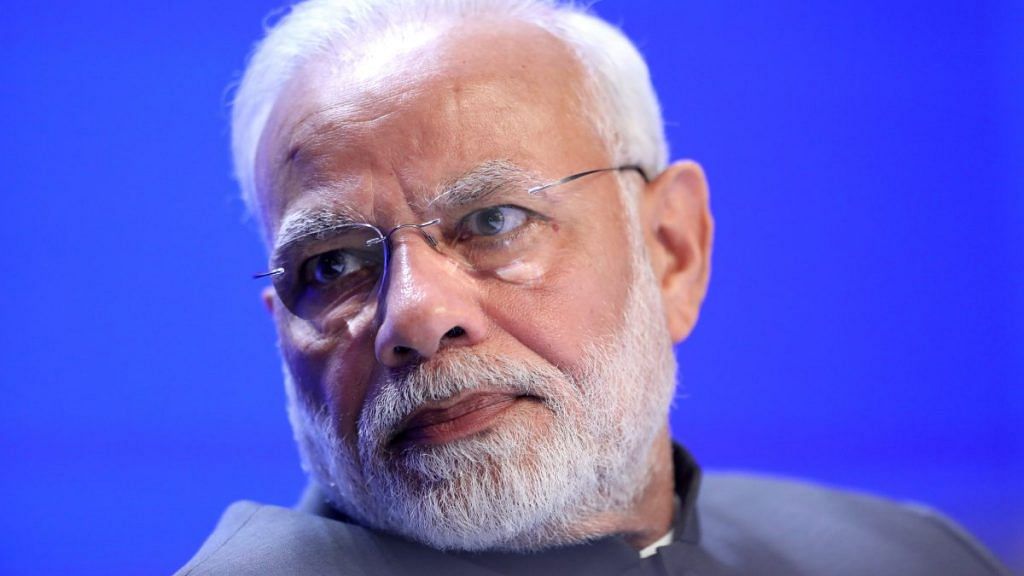Five years after Narendra Modi swept to power in a landslide election victory, and as he again faces the voters, we should ask: has he delivered on his campaign promises of Acche Din and “minimum government, maximum governance”?
In 2014, most commentators, and I include myself, didn’t interrogate Modi’s promises carefully enough, allowing him to get away with catchy slogans that may not have had any substance in them. Be that as it may, it’s incumbent on us now to move beyond the marketing, at which this government excels, and examine its record.
Start with the shiny new Gross Domestic Product (GDP) statistics, which would have you believe that the fastest growth under this government happened in the year of the disruptive shock of demonetisation. Serious economists and now even the International Monetary Fund for the first time have questioned this data. Even if we buy them, 7% growth should be seen as a baseline scenario and not a success. Meanwhile, all other indicators point to an economy stuck in the mud.
Consider Modi’s promise of making India a global trade and manufacturing hub. The reality is that the trade to GDP ratio peaked in 2012 in the supposedly bad old days of the United Progressive Alliance (UPA) and has been trending down ever since. It’s now as low as 44%. Likewise, foreign direct investment (FDI) as a share of GDP peaked at 3% in 2008-9 under the UPA and is hovering a little above 2% under Modi. India has actually been de-globalising on Modi’s watch, made worse by the ham-handed return to protectionism and import substitution which was tried for decades and then discarded in 1991.
In the latter days of the UPA, Modi and the Bharatiya Janata Party (BJP) made political hay from the fact that the rupee was going down against the US dollar. Modi even joked that the rupee was in the Intensive Care Unit (ICU). The truth is, even at the height of the “taper crisis” in 2013, the exchange rate stood at 63.6. Today it’s roughly at 69. If the rupee was in the ICU in 2013, it’s now officially dead and buried.
Also read: Socialism, not secularism, is the central fault line of Indian politics
Before the 2014 election, Modi was widely hailed by the markets for his supposedly pro-business stance. But the reality is that the Modi government has interfered more with business and commerce even than the UPA, exemplified by the cumbersome and botched GST implementation. Consider that the NIFTY 500 corporate profit to GDP ratio has been sliding ever since Modi and the BJP took power, and is at a 15 year low, even worse than under the UPA in 2013.
Likewise, news headlines screaming that the Sensex is hitting record highs misses the fact that annualised average total returns were 8.5% from 2010-2013 and have risen only to 9.1% from 2015-2018, a tiny difference.
As for demonetisation, it utterly failed to achieve its goals to reduce corruption, increase tax compliance and move to a less cash driven economy. The main impact was negative: to cause lasting damage to the large informal sector.
Yet, perhaps the most insidious and long lasting damage wrought by the BJP in the past five years is the degradation of institutions, to the point where they’ve been politicised beyond recognition — everything from the armed forces to the central bank. Institutions in India have always been weak, but far from strengthening them, as his campaign rhetoric suggested he would do, Modi has done more to capture institutions than the UPA ever did.
Also read: Voters rebelling over pollution, jobs, growth threaten BJP in Tamil Nadu
With such a bleak record, it is no wonder that the BJP has returned to communal politics like never before, openly pushing a Hindu supremacist agenda.
If the BJP’s 2014 election campaign was marked by a narrative of hope, aspiration and change, its 2019 counterpart has been angry and polarising. Voters have to ask themselves why, and what this ugly campaign foretells for the nation if the BJP wins again.
Rupa Subramanya is an economist based in Mumbai
By special arrangement with
